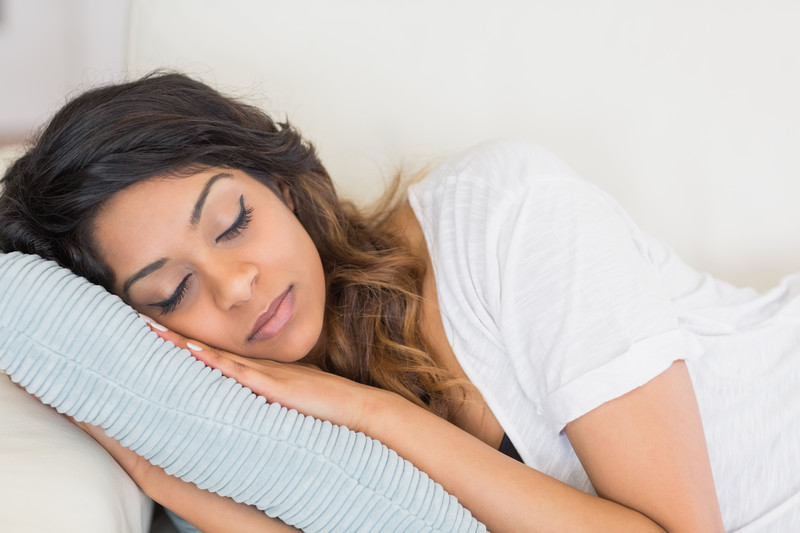Every purchase made online is encrypted with a high level of security you’ve come to expect. Your private information is never shared nor sold, so you can buy with confidence. You can also visit our store if you are in the St. Louis area.

While napping can’t take the place of a good night’s sleep, it does offer numerous health benefits when done right. The Sleep Foundation points out that over 85% of mammals “are polyphasic sleepers, meaning that they sleep for short periods throughout the day.” Humans are not in that category, but perhaps they should be. Learn more about the benefits of daytime napping.
Table of Contents
Daytime Napping Benefits
Napping creates several benefits, including the ability to refresh and recharge, which in turn, boosts alertness and improve motor performance. The length of your nap affects the level of benefits you receive.
- A 20-minute nap: Referred to as a stage two nap, this snooze enhances attention levels and motor skills.
- A 90-minute nap: An hour to 90-minutes allows you to reach REM (rapid eye movement) sleep, which allows for new connections to be made in the brain and results in creative problem-solving.
Naps between 20 and 90 minutes may be helpful but often result in a groggy feeling upon waking. It’s best to set an alarm to ensure you receive the amount of sleep you require.
Regular naps have been known to reduce cortisol levels and lower tension, thereby reducing your risk of heart disease. The best time to take a short nap is between the hours of 1:00 pm and 3:00 pm. It’s at this point during the day that your blood sugar dips and your energy is at its daily low.
Napping can also boost your mood, particularly after a bad night of sleep. After tossing and turning all night, you may awake to the alarm feeling grumpy and impatient. A short nap can erase those symptoms and help you feel chipper again. In fact, a nap is more effective than a cup of coffee, which can affect the upcoming night’s rest.
Companies That Encourage Naps
Studies show that 29 percent of workers report being excessively sleepy – or even falling asleep – at work. A lack of sleep costs US companies $63 billion per year in lost productivity. In light of these statistics, some companies are proactively combating grogginess and lack of sleep through on-the-job naps.
- Ben & Jerry’s: “If people need to catch a little snooze during the day to do the best possible job they can do, we’re behind it,” says a company representative. The ice cream giant offers yoga classes and personal trainers, allows pet dogs in the office, and features a room with a bed and pillows for employee use as needed.
- Google: Futuristic “nap pods” are situated throughout the Mountain View, California offices and provide dark and comfortable spaces for employee naps, complete with soothing sounds.
- Nike: The athletic gear company’s headquarters offers quiet rooms for staffers to meditate or nap throughout the day.
- Zappos: The online shoe retailer has offered a nap room at its Las Vegas headquarters since launching. The room is complete with a couch, recliners, a beanbag chair, and other accessories and is frequented by those needing a little shut-eye, particularly individuals who work overnight shifts.
- Huffington Post: The New York City headquarters of this online paper offers nap rooms to encourage rest and increase productivity. The company-furnished rest spaces require reservations and are typically booked solid.
How To Nap Correctly
If you experience fatigue or sudden, unexpected sleepiness, you might want to consider taking an afternoon nap. Other reasons to consider a snooze include the desire to add the benefits of regular naps to your daily routine or you are about to experience sleep loss, such as when you have to work late or stay up late for other reasons.
If you have suddenly become sleepy each afternoon for no apparent reason, you may want to discuss the issue with your doctor. A sudden increased need for additional sleep – be it longer nighttime sleep or daytime rests – could indicate a health problem that is disrupting your nighttime sleep or a sleep disorder, such as apnea or narcolepsy. It also, however, could be related to prescription medicine which interferes with your quality of sleep or causes daytime sleepiness. An appointment with your doctor to fully discuss the issue and determine the cause and solution is recommended.
When utilizing naps, keep in mind these parameters:
- A stage two nap is the best option for regular daytime napping. The longer you nap, the greater chance of awaking with grogginess.
- Time of day. The best time to take a nap in mid-afternoon between the hours of 1:00 and 3:00 pm. This is the time of day that you will typically experience the most sleepiness.
- Nighttime sleep. Keeping a short nap in the mid-afternoon will be the best situation without interfering with your nighttime rest. However, if your sleep schedule is different or you find yourself growing sleepy later in the day, you may benefit from a different nap schedule without affecting your sleep at bedtime.
- Create a quiet, dark, cool place with few distractions for your nap area. This will allow you to fall asleep quickly and not waste your time set aside for a nap. Be sure to set an alarm to wake yourself after about 20 minutes and then allow yourself time to fully awaken prior to jumping back into your busy schedule.
Contact STL Beds Now
You can also contact us by filling out the form below. Make sure to fill in as many fields as possible so we can respond to you with the most accurate information!
